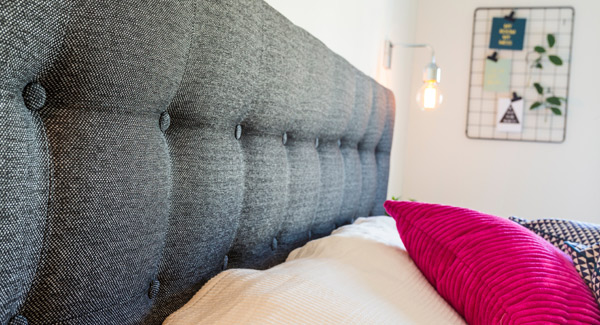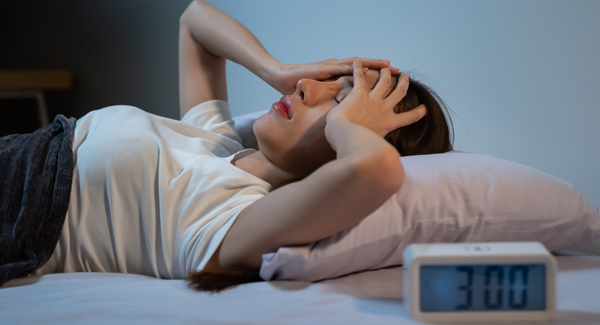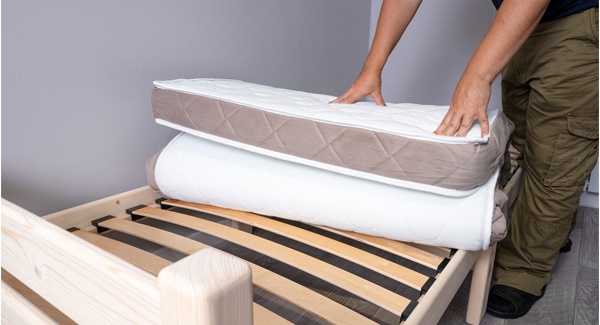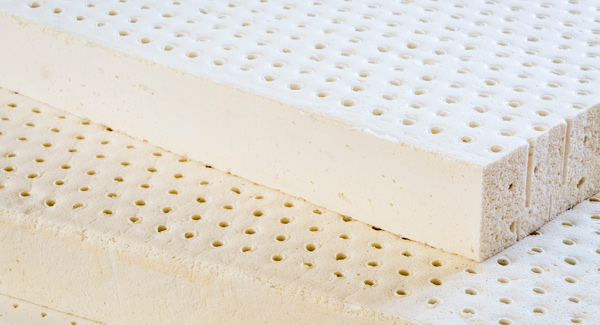Home » Headboards » Do You Need A Headboard With Your Bed?
Do you need a headboard with your bed?
Article navigation
- Published:
- Written by: Tony Brown
- Topic: Headboards
In the past, a headboard’s primary purpose was to protect the sleeper from cold drafts in less insulated buildings. Nowadays, headboards are popular for their aesthetic appeal, creating a stunning focal point in any bedroom.
But as headboards are usually sold separately from the bed, some people choose not to have one. There are pros and cons to using a headboard. Here’s what you need to know.

Reasons why you should use a headboard
While it’s not necessary to use a headboard, there are plenty of good reasons to have one.
Style
Headboards come in various designs and materials to complement any bedroom décor. Whether you’re looking for a simple, elegant design or a more extravagant style, the options are endless. Headboards are available in various sizes, either with struts or floor standing.
Upholstered headboards provide more comfort and are available in many sumptuous fabrics. Some divans can be paired with a matching headboard for a more streamlined look.
Leather and faux leather headboards are stylish and durable. They provide good comfort, and as most leathers are stain-resistant, they only require occasional light cleaning with a slightly damp cloth.
Some people prefer the natural beauty, warmth, and sturdiness of wooden headboards. Available in various finishes such as oak, pine, and beech, wooden headboards are a versatile and timeless option that can elevate any bedroom.
Metal headboards are renowned for their elegance and versatility. They come in various colours and designs and are suitable for many bedroom styles.
Headboards provide support when sitting up in bed
A well-designed headboard will allow you to sit up comfortably in bed for rest and relaxation. So whether you enjoy reading, watching TV, breakfast in bed, or spending time on your mobile or desktop, a headboard helps support the back and maintain better posture while sitting upright in bed.
Upholstered headboards provide a generous amount of padding, making them more comfortable to sit up against than wood or metal headboards.
Prevent pillows from falling behind the bed
Losing your pillows at night can be frustrating, especially when they fall on the floor and collect dirt and dust. Fitting a headboard can prevent your pillows from falling behind the bed. Some headboards come with a pillow stop, a thin upholstered board that covers the gap between the headboard and the top of the mattress.
Some metal or slatted headboards may be less effective at holding pillows depending on the spacing between the bars or slats.
Wall protection
Bedroom walls can easily get marked if they come into contact with the bed or if someone leans up against them. A headboard can help protect the wall from everyday wear and tear and cover up any existing marks.
Extra storage
If your bedroom is light on space, some headboards come with integrated shelves or drawers for additional storage.
Keep the cold at bay
In poorly insulated homes, the walls may feel cold to rest against. A headboard protects against a cold wall, allowing you to sleep comfortably in bed, especially during colder months.
Reasons not to use a headboard
While headboards provide a range of benefits, there may also be some reasons not to use one with your bed.
Room space
Headboards come in various designs and thicknesses. They take up additional room space when attached to the bed. Most headboards are between 2 and 4 inches deep. A curved design will typically take up more space than a straight design. Some headboards may also be wider than the bed they are attached to.
However, most headboards are paired with a divan bed base, which typically takes up less room space than a bed frame. This is because the divan is usually no bigger than the mattress it is paired with. In contrast, bed frames have a larger footprint because the mattress usually sits inside the frame.
In some cases, a headboard may be out of the question because the bed is positioned underneath a low or sloping ceiling.
The money could be invested in a higher-quality mattress instead
Most people buy a headboard for its aesthetic appeal. If you don’t use a headboard, you could put the money you have saved towards a higher-quality mattress instead. After all, good sleep is something we should all be investing in. Ask yourself what the real benefits of using a headboard are and could you make do without one.
You can prioritise the bed
When buying the headboard and bed together, some people would rather prioritise the aesthetics over sleep quality. A headboard can sometimes become a distraction where shoppers spend too much time thinking about which styles, fabrics, and colours will fit in with their bedroom décor.
By not having a headboard, you can focus on what really matters: the bed, the divan, and the mattress.
Care and maintenance
Over time, headboards can accumulate dirt and dust, so regular cleaning is essential. While wood, metal, and leather headboards are easy to maintain, fabric headboards require special care to ensure they remain in good condition. Fabric headboards can also absorb odours from pets, food, and cigarettes which can sometimes release a slightly unpleasant smell.
Before purchasing a headboard, consider whether the material suits your lifestyle.
Headboards may have a longer delivery time
If you’re buying the bed and headboard together, you may have to wait longer for delivery than expected, as many headboards are made to order. Some retailers provide a split delivery service where they can deliver the bed sooner. But it helps to check this with the retailer before ordering.
Final thoughts
It’s not absolutely necessary to use a headboard with your bed. But, a well-chosen headboard is a stylish addition to any home and will allow you to sit up comfortably in bed for rest and relaxation.
Share this article

About the author
Tony Brown is the founder and creator of The Bed Consultant. His career in the bed industry began in 2002. After graduating from university with a degree in Business Administration, Tony joined one of the largest independent furniture retailers in the UK as a bed consultant. Tony has helped thousands of customers find the perfect mattress.




